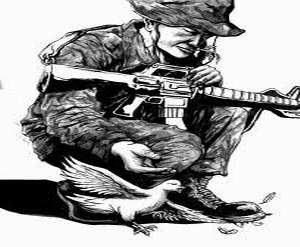From the Website of the Office of the President
links: http://www.president.gov.ph/homepage_image_big/employment-rate-in-july-2012-is-estimated-at-93-0-percent/
links: http://www.president.gov.ph/homepage_image_big/employment-rate-in-july-2012-is-estimated-at-93-0-percent/
Employment rate in July 2012 is estimated at 93.0 percent
----------------------------------------------------------------
Employment rate in July 2012 is estimated at 93.0 percent
September 18, 2012
Gov @ Work
The results of the July 2012 Labor Force Survey (LFS) recorded an
estimate of 37.6 million employed persons, which translated to an
employment rate of 93.0 percent. This rate is almost the same with the
reported estimate of 92.9 percent in July 2011. Among regions, Cagayan
Valley recorded the highest employment rate of 96.8 percent, followed by
MIMAROPA and Zamboanga Peninsula (95.9% each). The lowest employment
rate was recorded in National Capital Region (NCR) with 90.1 percent.
The country had an estimate of 63.1 million population aged 15 years and over in July 2012. Out of this estimate, 40.4 million persons were in the labor force, or those who were either employed or unemployed. These figures correspond to a labor force participation rate (LFPR) of 64.0 percent. The LFPR in July 2011 was 64.3 percent. Across regions, LFPR was highest in Northern Mindanao at 71.0 percent, while the lowest was reported in Autonomous Region in Muslim Mindanao (ARMM) at 54.5 percent.
Notes:
1/ Estimates for April 2012 are preliminary and may change
2/ Population 15 years and over is from the 2000 Census-based population projections.
Of the estimated 37.6 million employed persons in July 2012, those who worked in the services sector comprised the largest proportion, which posted more than half or 53.3 percent of the estimated employed persons. Among the persons who worked in the services sector, those engaged in wholesale and retail trade; repair of motor vehicles and motorcycles comprised the highest percentage (18.6% of total employed).
The employed persons engaged in agriculture sector appeared to be the second largest group, which accounted for 30.9 percent of the total employed. About 16.0 percent of the total employed was consisted of workers in the industry sector, with the manufacturing (8.5% of the total employed) and construction (6.1% of the total employed) sub-sectors having the highest proportions.
Among the major occupation groups, laborers and unskilled workers contributed the largest group indicating 33.2 percent of the total employed persons in July 2012. Farmers, forestry workers and fishermen came next with a share of 13.7 percent of the total employed.
Employed persons fall into any of these categories: wage and salary workers, self-employed workers without any paid employee, employer in own family-operated farm or business, and unpaid family workers. Wage and salary workers are those who work for private households, private establishments, government or government-controlled corporations, and those who work with pay in own family-operated farm or business. The majority (59.1%) of the total employed population in July 2012 were wage and salary workers, with the largest
percentage (45.4% of total employed) working for private establishments. Those working for the government or government-controlled corporations accounted for only 8.4 percent while those working for private households comprised 4.9 percent. In July 2011, wage and salary workers accounted for 56.3 percent of the total employed.
Self-employed workers without any paid employee constituted 27.5 percent of the total employed in July 2012, while employers in own family-operated farm or business made up 4.0 percent share. The unpaid family workers accounted for 9.4 percent of the total employed.
Employed persons are classified as either full-time workers or part-time workers. Full-time workers are those who work for 40 hours or more while part-time workers work for less than 40 hours. Of the total employed persons in July 2012, 65.6 percent were working full time while 33.7 percent were part-time workers.
Employed persons who express the desire to have additional hours of work in their present job, or to have additional job, or to have a new job with longer working hours are considered underemployed. The number of underemployed persons in July 2012 was estimated at 8.5 million placing the underemployment rate at 22.7 percent. The underemployment rate in July 2011 was estimated at 19.1 percent. The visibly underemployed persons or those working for less than 40 hours during the reference week in July 2012 accounted for 53.5 percent of the total underemployed. Those working for 40 hours or more accounted for 45.4 percent. A large percentage of the underemployed were working in the services sector (42.5%) and agriculture sector (41.5%). The underemployed in the industry sector accounted for 16.0 percent.
The unemployment rate in July 2012 was estimated at 7.0 percent, which is almost similar from the rate reported in July 2011 (7.1%). NCR posted the highest unemployment rate at 9.9 percent while Cagayan Valley posted the lowest at 3.2 percent. Among the unemployed persons, there were more males (62.1%) than females (37.9%). Majority (51.2%) of the unemployed persons belong to age group 15-24 years.
With regard to the highest grade completed, one-third (33.3%) of the unemployed persons were high school graduates, 13.9 percent were college undergraduates, while 19.2 percent were college graduates.
Source: http://www.census.gov.ph/
The country had an estimate of 63.1 million population aged 15 years and over in July 2012. Out of this estimate, 40.4 million persons were in the labor force, or those who were either employed or unemployed. These figures correspond to a labor force participation rate (LFPR) of 64.0 percent. The LFPR in July 2011 was 64.3 percent. Across regions, LFPR was highest in Northern Mindanao at 71.0 percent, while the lowest was reported in Autonomous Region in Muslim Mindanao (ARMM) at 54.5 percent.
Results from the July 2012 Labor Force Survey (LFS)
| Philippines | July 2012 1/ | July 2011 |
| Population 15 years and over (in ’000) | 63,119 | 62,054 |
| Labor Force Participation Rate (%) | 64.0 | 64.3 |
| Employment Rate (%) | 93.0 | 92.9 |
| Unemployment Rate (%) | 7.0 | 7.1 |
| Underemployment Rate (%) | 22.7 | 19.1 |
1/ Estimates for April 2012 are preliminary and may change
2/ Population 15 years and over is from the 2000 Census-based population projections.
Of the estimated 37.6 million employed persons in July 2012, those who worked in the services sector comprised the largest proportion, which posted more than half or 53.3 percent of the estimated employed persons. Among the persons who worked in the services sector, those engaged in wholesale and retail trade; repair of motor vehicles and motorcycles comprised the highest percentage (18.6% of total employed).
The employed persons engaged in agriculture sector appeared to be the second largest group, which accounted for 30.9 percent of the total employed. About 16.0 percent of the total employed was consisted of workers in the industry sector, with the manufacturing (8.5% of the total employed) and construction (6.1% of the total employed) sub-sectors having the highest proportions.
Among the major occupation groups, laborers and unskilled workers contributed the largest group indicating 33.2 percent of the total employed persons in July 2012. Farmers, forestry workers and fishermen came next with a share of 13.7 percent of the total employed.
Employed persons fall into any of these categories: wage and salary workers, self-employed workers without any paid employee, employer in own family-operated farm or business, and unpaid family workers. Wage and salary workers are those who work for private households, private establishments, government or government-controlled corporations, and those who work with pay in own family-operated farm or business. The majority (59.1%) of the total employed population in July 2012 were wage and salary workers, with the largest
percentage (45.4% of total employed) working for private establishments. Those working for the government or government-controlled corporations accounted for only 8.4 percent while those working for private households comprised 4.9 percent. In July 2011, wage and salary workers accounted for 56.3 percent of the total employed.
Self-employed workers without any paid employee constituted 27.5 percent of the total employed in July 2012, while employers in own family-operated farm or business made up 4.0 percent share. The unpaid family workers accounted for 9.4 percent of the total employed.
Employed persons are classified as either full-time workers or part-time workers. Full-time workers are those who work for 40 hours or more while part-time workers work for less than 40 hours. Of the total employed persons in July 2012, 65.6 percent were working full time while 33.7 percent were part-time workers.
Employed persons who express the desire to have additional hours of work in their present job, or to have additional job, or to have a new job with longer working hours are considered underemployed. The number of underemployed persons in July 2012 was estimated at 8.5 million placing the underemployment rate at 22.7 percent. The underemployment rate in July 2011 was estimated at 19.1 percent. The visibly underemployed persons or those working for less than 40 hours during the reference week in July 2012 accounted for 53.5 percent of the total underemployed. Those working for 40 hours or more accounted for 45.4 percent. A large percentage of the underemployed were working in the services sector (42.5%) and agriculture sector (41.5%). The underemployed in the industry sector accounted for 16.0 percent.
The unemployment rate in July 2012 was estimated at 7.0 percent, which is almost similar from the rate reported in July 2011 (7.1%). NCR posted the highest unemployment rate at 9.9 percent while Cagayan Valley posted the lowest at 3.2 percent. Among the unemployed persons, there were more males (62.1%) than females (37.9%). Majority (51.2%) of the unemployed persons belong to age group 15-24 years.
With regard to the highest grade completed, one-third (33.3%) of the unemployed persons were high school graduates, 13.9 percent were college undergraduates, while 19.2 percent were college graduates.
Source: http://www.census.gov.ph/
News
Philippines working hard to comply with the extractive industries transparency initiative standards
April 4, 2013
The Philippines is aggressively working to have an international
standard that will ensure greater transparency and accountability in the
payment and collection in the country’s extractive industries.
In a press conference in Malacanang on Thursday, Secretary Elisea Gozun, the Presidential Assistant on Climate Change, said the country is currently working to comply with the Extractive Industries Transparency Initiative (EITI) to make sure that companies engaged in extractive businesses pay the right taxes and revenues for the benefit of the people.
Under EITI’s compliance process, the Philippines has to sign up and an international board will evaluate the country’s application.
If the Philippine application is rejected, it can’t move to the next phase, according to Gozun. In the next phase however, if the Philippines is accepted, it will become an EITI candidate. Then, it will be required to prepare a report which will be reconciled and validated by an international validator accredited by the international board, she noted.
Presently, the Philippines is in the first phase—candidacy. There are four requirements under this phase. First, the government must issue an unevocable public statement of its intention to join EITI. The government complied with the issuance of the Executive Order 79, Gozun said.
The second requirement is that government must appoint a senior individual to lead the implementation. President Benigno S. Aquino III designated Gozun as the EITI Lead Senior government official.
The third requirement is the government’s commitment to work with civil society and companies on the implementation of EITI.
Among the remaining task that the government must fulfill are the establishment of a multi-stakeholder group that will oversee the implementation of the EITI and the crafting of a work plan that contains measurable targets, costs and timetable for the implementation of EITI.
To comply with EITI’s requirements, Gozun said they have met with Bantay Kita, a federation of non-government organizations (NGOs) all over the country, asking it to help the government with the country’s EITI application.
Gozun also said they met the Chamber of Mines of the Philippines and other large scale mining companies as well as the Petroleum Association of the Philippines for the oil and gas sector.
‘”Nag-outreach tayo starting off with the training of trainers and we actually had five regional consultations conducted in different parts of the country where mining is active. We also had a meeting with the indigenous people in areas where you have mining,” she said.
She also said her group met with the academe, as well as with the religious groups.
The Philippines will benefit from participating in the EITI by implementing an international-recognized transparency standard that will benefit the country’s commitment to reform and anti-corruption, which is all in line with the basic social contract of the President with the Filipino people, Gozun said.
“We hope that this will also lead to improvements to tax collection processes, as well as enhance the thrust and stability in the extractive industries,” she added.
EITI, launched by former British Prime Minister Tony Blair in 2002 at the World Summit for Sustainable Development, is an international multi-stakeholder group that sets standards for transparency in extractive industry payments and receipts.
It aims to strengthen governance by improving transparency and accountability in extractive industries.
The first EITI international board was established in October 2006. Currently, there are 37 countries participating in the EITI, 20 of which are already compliant, and 17 are candidates, according to Gozun.
In a press conference in Malacanang on Thursday, Secretary Elisea Gozun, the Presidential Assistant on Climate Change, said the country is currently working to comply with the Extractive Industries Transparency Initiative (EITI) to make sure that companies engaged in extractive businesses pay the right taxes and revenues for the benefit of the people.
Under EITI’s compliance process, the Philippines has to sign up and an international board will evaluate the country’s application.
If the Philippine application is rejected, it can’t move to the next phase, according to Gozun. In the next phase however, if the Philippines is accepted, it will become an EITI candidate. Then, it will be required to prepare a report which will be reconciled and validated by an international validator accredited by the international board, she noted.
Presently, the Philippines is in the first phase—candidacy. There are four requirements under this phase. First, the government must issue an unevocable public statement of its intention to join EITI. The government complied with the issuance of the Executive Order 79, Gozun said.
The second requirement is that government must appoint a senior individual to lead the implementation. President Benigno S. Aquino III designated Gozun as the EITI Lead Senior government official.
The third requirement is the government’s commitment to work with civil society and companies on the implementation of EITI.
Among the remaining task that the government must fulfill are the establishment of a multi-stakeholder group that will oversee the implementation of the EITI and the crafting of a work plan that contains measurable targets, costs and timetable for the implementation of EITI.
To comply with EITI’s requirements, Gozun said they have met with Bantay Kita, a federation of non-government organizations (NGOs) all over the country, asking it to help the government with the country’s EITI application.
Gozun also said they met the Chamber of Mines of the Philippines and other large scale mining companies as well as the Petroleum Association of the Philippines for the oil and gas sector.
‘”Nag-outreach tayo starting off with the training of trainers and we actually had five regional consultations conducted in different parts of the country where mining is active. We also had a meeting with the indigenous people in areas where you have mining,” she said.
She also said her group met with the academe, as well as with the religious groups.
The Philippines will benefit from participating in the EITI by implementing an international-recognized transparency standard that will benefit the country’s commitment to reform and anti-corruption, which is all in line with the basic social contract of the President with the Filipino people, Gozun said.
“We hope that this will also lead to improvements to tax collection processes, as well as enhance the thrust and stability in the extractive industries,” she added.
EITI, launched by former British Prime Minister Tony Blair in 2002 at the World Summit for Sustainable Development, is an international multi-stakeholder group that sets standards for transparency in extractive industry payments and receipts.
It aims to strengthen governance by improving transparency and accountability in extractive industries.
The first EITI international board was established in October 2006. Currently, there are 37 countries participating in the EITI, 20 of which are already compliant, and 17 are candidates, according to Gozun.
Office of the President Website
links:
http://www.president.gov.ph/news/philippines-working-hard-to-comply-with-the-extractive-industries-transparency-initiative-standards/
http://www.president.gov.ph/homepage_image_big/employment-rate-in-july-2012-is-estimated-at-93-0-percent/
http://www.president.gov.ph/homepage_image_big/employment-rate-in-july-2012-is-estimated-at-93-0-percent/
OTHER HUMAN RIGHTS PROMOTIONS WEBSITES
PROTECTION AND PROMOTION OF HUMAN RIGHTS
-----------------------------------------------------------------------------------------------------------
---------------------------------------------------------------------------------------
-----------------------------------------------------------------
----------------------------------------
---------------------------------------------------------------------------------------
-----------------------------------------------------------------
----------------------------------------

























0 comments:
Post a Comment